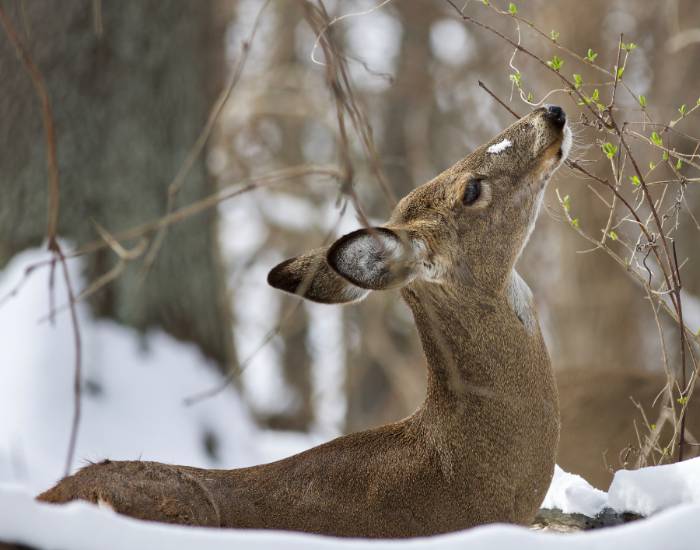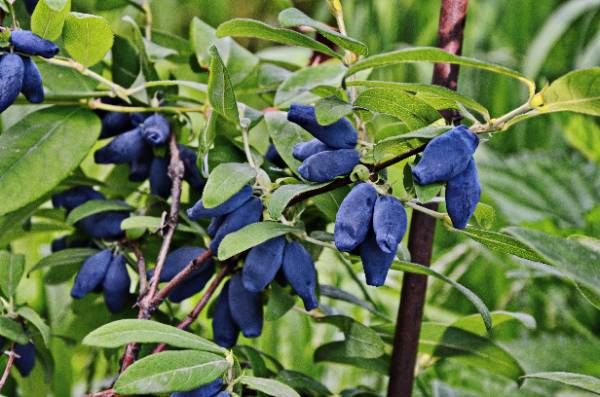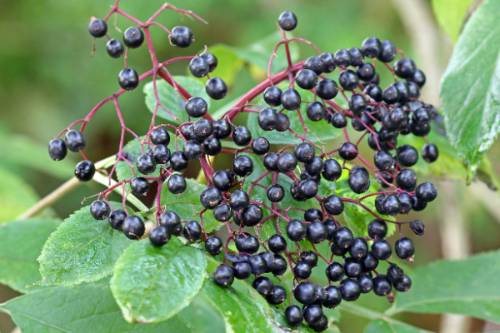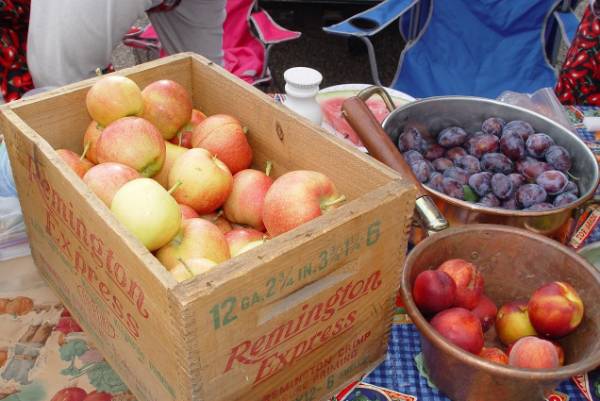Backyard Fruit Production in Utah’s High Mountain Valleys

Utah’s population has seen significant growth in recent years, resulting in population increase outside of the Wasatch Front and into high mountain valleys. These locations include Bear Lake Valley, Ogden Valley, Morgan and Henefer, Park City, Wasatch Valley, and Sanpete Valley. Much of the information presented here applies to the Uintah Basin and other high-elevation locations in eastern Utah. A common characteristic of these valleys includes high elevations (greater than 5,000 feet), leading to short growing seasons. Many homeowners who are new to these regions wish to establish perennial fruit crops in their gardens. This publication outlines the challenges to fruit production in Utah’s high mountain valleys, offers mitigation suggestions, and lists plant materials that might be successful.
Climate
High mountain valleys can be challenging for fruit production due to very cold winters and a short frost-free growing season in summer. Midwinter temperatures can often be fifteen to twenty degrees colder in the mountain valleys than along the Wasatch Front. Further, some of the valleys are “bowls” without drainage for cold air to escape. Thus, cold air settles in the valleys overnight, and temperatures plummet. When choosing a site, select a location that will allow air drainage. Typically, elevations 50 to 100 feet above the valley floor are less freeze prone. Very cold midwinter conditions will damage tender fruit buds and, if prolonged, the branches and trunks of trees can be injured. This is especially true for stone fruits (peaches, plums, apricots, and cherries). Temperatures may also drop quickly in the fall, and plants do not have time to acclimate to the low temperatures. This process ordinarily occurs over weeks, not hours. Homeowners will find severe damage to fruiting wood and scaffold branches in the spring caused by the sudden shift to cold temperatures in the fall.
High mountain valleys also have short growing seasons of less than 120 days. Typically, the last spring freeze is in late May to early June, and the first fall frost is in mid to late September (Table 1). Most popular apple and peach cultivars require 140 to 180 freeze-free days. Further, these valleys will sometimes warm in the spring, only to experience late spring frosts which can damage both emerging flowers and young developing fruit. Spring temperatures below 28 °F will severely damage developing flowers or fruit, leading to an almost total crop failure.
Table 1: Median Dates of the Last Spring Frost, First Fall Frost, and Frost-Free Dates for High Mountain Valley Locations in Utah
| Location | Median last spring freeze | Median first fall freeze | Median freeze-free days | Approximate elevation (feet) |
|---|---|---|---|---|
| Bear Lake SP | May 28 | September 29 | 118 | 6000 |
| Laketown | June 13 | September 12 | 87 | 6000 |
| Morgan | June 3 | September 12 | 101 | 5100 |
| Henefer | June 27 | August 25 | 55 | 5400 |
| Coalville | June 17 | September 2 | 77 | 5600 |
| Kamas | June 14 | September 12 | 86 | 6480 |
| Park City | June 15 | September 26 | 103 | 6900 |
| Heber City | June 12 | September 10 | 90 | 5500 |
| Manti | May 22 | September 25 | 128 | 5680 |
| Ephraim | May 26 | September 22 | 123 | 5500 |
| Gunnison | June 1 | September 17 | 110 | 5100 |
| Richfield | May 24 | September 19 | 119 | 5300 |
| Panguitch | June 21 | September 6 | 75 | 6643 |
Notes. Data is from the Utah Climate Center. Find freeze information for additional sites at www.climate.usu.edu.
The U.S. Department of Agriculture (USDA) Plant Hardiness Zone Map (https://planthardiness.ars.usda.gov/) gives numerical designations, from 1 (coldest) to 12 (warmest), based on the average minimum winter temperature of a geographical region. Most high mountain valleys in Utah are given a USDA hardiness zone designation of 4 or 5, meaning that temperatures can regularly drop below -15 °F to -25 °F during midwinter. Many fruit trees can tolerate these temperatures with minimal damage. However, the USDA hardiness zones are only an indication of minimum winter temperature; they do not consider the length of the growing season required for crop maturation. Therefore, despite hardiness zone, it is important to consider that late or early frosts may still damage buds, fruit, and branches. Fruit buds and flowers differ in their hardiness based on their stage of development. The Utah State University (USU) Extension fact sheet "Critical Temperatures for Frost Damage on Fruit Trees” gives pictorial reference of flower hardiness by stage of development in degrees Fahrenheit.
Climate limitations can be mitigated via two strategies. The first is to use normal season extension practices to protect plants from late spring and early fall frosts. This works best for small fruits and is less practical for tree fruits. Season extension strategies can be makeshift or more structured. Small fruits such as strawberries, raspberries, currants, and gooseberries can be covered with tarps or frost blankets in the early evening before freezing temperatures are forecast. Tarps will trap heat being radiated from the soil overnight. The coverings must be removed in the morning once the air temperature exceeds 30 °F. Small fruit trees, particularly apples on dwarfing rootstocks, can also be tarped to protect from mild spring or fall frosts when wind is not present. The second mitigation option includes adding a source of heat near the plant to provide protection from spring frost damage. These heat sources include running propane or electric heaters through the night, incandescent lights (including strings of incandescent Christmas lights) and flood lights that give off heat placed in the trees next to the flowers or small developing fruit, or using lighted charcoal briquettes under the trees. With any methods of frost protection, the objective is to raise the temperature in the tree canopy by 1 °F to 2 °F as this can be the difference between crop loss and crop survival.
Unheated greenhouses called high tunnels offer semi-permanent protection against spring and fall frosts. These are constructed from PVC or metal pipe with plastic sheeting as a cover. They capture light energy from the sun during the day and capture heat radiated from the soil overnight. High tunnels are well suited to small fruit crops like strawberries, raspberries, currants, and gooseberries. Although not ideal, high tunnels can be used for dwarf fruiting trees as a form of frost protection. However, high tunnels don’t allow pollinating insects inside and may reduce fruit set. USU Extension has an extensive literature covering construction and uses for high tunnels. References are found at the end of this publication or at www.tunnel.usu.edu.
Wildlife
Mountain valleys encompass rangeland for deer, elk, and moose. Resident deer populations are common in high valleys and are particularly troublesome for gardening (Figure 1). During the summer, deer will eat the soft tips of raspberry canes, leading to damage and potential yield reduction. In the fall, male deer rub their antlers on supple young trees, which can result in bark removal and broken limbs. The potential for rubbing damage usually declines as trees age and develop thicker bark and stiffer limbs. However, when other food sources are scarce, deer will browse on the fruit buds located on older trees’ shoot tips. This leads to crop reduction and increased pruning time to remove damaged shoots.

Wildlife damage can be mitigated in two ways. The most effective is to enclose areas where fruit trees are planted with a woven wire fence that is 8–10 feet high. Young trees can also be individually enclosed in a wire fence with at least three fence posts to keep the deer from moving the fence while rubbing. This fencing can be removed in late spring or early summer to allow the tree to grow, then reinstalled in the fall. The second, less effective method discourages wildlife by applying a liquid deer repellant spray in the fall. Liquid repellents are effective for 3–4 weeks with no precipitation. If rain or snow occurs during the normal effective period, repellents must be re-applied. We have found other scent repellents, such as soap and dryer sheets, ineffective.
Rabbits can sometimes gnaw the bark around the base of trees during the winter months. Exclusion with chicken wire fencing or wire window screening is the only effective rabbit protection. This fencing must be sufficiently tall to exclude rabbits when snow is deep in midwinter. A 3-foot tall cylinder of the selected material wrapped around each tree with 2–3 inches between the trunk and the chicken wire is sufficient to protect trees from rabbits.
Field mice or vole populations are cyclical; some years when populations are high, they can significantly damage fruit trees. Ground squirrels can also damage fruit trees. When other food is scarce, they will gnaw the bark from fruit trees from the ground to the snow line. Not allowing other vegetation to grow within 3 feet of the trunk helps reduce habitat. Exclude voles by creating a cylinder with ½-inch mesh hardware cloth and wrapping that loosely around tree trunks. Control ground squirrel populations with traps and bait. Exclusion methods are difficult to implement because ground squirrels can burrow 6 feet below the soil surface.
Plant materials mentioned below should be hardy in Utah’s mountain valleys. This list is not exhaustive, and not all plant materials have undergone trials in Utah’s colder areas. These recommendations are mostly based on performance in other locations.
Small Fruits
Strawberries
Strawberries grow low to the ground, so they are usually covered by snow during the coldest parts of winter, which offers winter protection. Two types of strawberries are available: June-bearing and day-neutral. Either type should do well in Utah’s mountain valleys. Potential June-bearing strawberries include Earliglow, Cavendish, Chandler, Jewel, and Sparkle. Day-neutral types include Seascape, Tribute, Evie 2, and Aromas.
Raspberries
Raspberries can be either summer-bearing or fall-bearing (everbearing). Each type has advantages and disadvantages depending on the circumstances. Summer-bearing raspberries, which fruit on second-year canes, should mature fruit in late-July to August in cold areas, but overwintering canes may be injured by extremely cold winter conditions. Fall-bearing raspberries, which fruit on first-year canes, can be cut off near ground level when dormant, thus avoiding midwinter cold injury. However, depending on specific cultivars, the fall crop may mature too late to be harvested during short summers. For fall bearers, select only the earliest fruiting types and consider lengthening the season with tunnels or row covers.
| Summer-bearing raspberries | Zone | Fall-bearing raspberries | Zone | Fall-bearing (yellow) raspberries | Zone |
|---|---|---|---|---|---|
| Boyne | 3 | Polana | 3 | Anne | 4 |
| Killarney | 3 | Polka | 3 | Fall Gold | 4 |
| Latham | 3 | Joan J | 3 | ||
| Cascade Delight | 3 | Autumn Bliss | 3 | ||
| Chilliwack | 4 | Caroline | 4 | ||
| Reveille | 4 | Ruby | 4 | ||
| Canby | 4 |
Blackberries
Blackberries are not as winter hardy as raspberries and may suffer winter dieback. Primocane blackberry cultivars require 200+ frost-free days to mature and are not recommended in northern Utah. Floricane blackberries produce fruit on second-year canes and are susceptible to winter damage. Hardy blackberry cultivars include Illini Hardy, which is a zone 4 erect blackberry but very thorny. Apache, Chester, Navaho, and Triple Crown are thornless but only hardy to zone 5.
Currants
Currants are very winter hardy and mature sufficiently early that they should be successful in all of Utah’s high mountain valleys. Both red and white currants are the same species. Red cultivars include Rovada and Red Lake. White cultivars include White Imperial or Blanka and have high-quality sweet fruit. Black currants are a different species with a distinctive “musky” flavor that many people find unfavorable. Black currant cultivars include Consort, Crusader, and Titania.
Haskaps

Haskaps, also known as honeyberry or blue honeysuckle, are extremely hardy bush plants with flowers that can withstand spring frosts down to 19 °F (Figure 2). Fruits are ripe when the inside and outside are a deep blue color with a flavor that tastes like a mix of raspberry, blueberry, and currant. Haskap fruits have more vitamin C than blueberries and raspberries. Early cultivars include Indigo Gem, Blue Lightning, and Kamchatka. Mid-season fruiting cultivars include Aurora and Borealis. Late-fruiting cultivars are Tana, Keiko, and Solo. Mature fruit drop quickly or are eaten by birds if not harvested promptly.
Gooseberries
Gooseberries are very winter hardy and mature early enough to bear fruit annually but are very thorny. Both red and green gooseberry cultivars are available. Cultivars to consider include Poorman, Pixwell, Invicta, and Hinnomaki Red.
Bush cherries
Bush cherries, ground cherries, and Nanking cherries are bushy stone fruits related to tart cherries. However, instead of growing as upright trees, they have more of an irregular shrubby form. These shrubs can also double as quite attractive ornamental flowering shrubs in the landscape. Fruit ripens in late summer and is small and brightly colored. The fruit contains little pulp and is best used for making jelly. Carmine Jewel is recommended for high valleys.
Serviceberry
Serviceberry, also called juneberry or Saskatoons, is a native, very hardy large shrub that can be trained to grow as a tree. The fruit ripens in mid to late summer and is high in fiber and minerals. Serviceberries are usually used for jam, jelly, juice, and pies but can be eaten fresh. Recommended cultivars include Honeywood, Martin, Northline, Parkhill, Pembina, Regent, and Thiessen.

Used for Syrup or Jam
Elderberries
Elderberries are native to North America and are very hardy, large shrubs. Fruit eaten fresh is bitter but the fruit can be processed for syrup and jam (Figure 3). Recommended cultivars include Adams 2, Black Lace, Wyldewood, and York.
Grapes
Grapes require at least 120 frost-free days to mature fruit. Thus, grapes are not suited to Utah’s high mountain valleys unless grown within a greenhouse. European grapes are insufficiently hardy and require a much longer frost-free period than is available in northern Utah. American bunch grapes like Concord are more winter hardy but will still require a longer growing season than is available in Utah’s high mountain valleys. When selecting a grape cultivar, make sure your selection is both cold hardy and requires a sufficiently short growing season to produce fruit consistently. Reference USU Extension’s “Grape Varieties for Utah” fact sheet for cultivar recommendations.
Tree Fruits
Apples
Apples are sufficiently hardy to survive winter conditions in Utah’s high mountain valleys (Figure 4). Even though apples are among the latest flowering fruit trees, late spring frosts can still damage the flowers or tiny developing fruit. Early ripening cultivars include Beacon, Jersey Mac, Lodi, Paula Red, Pristine, Redfree, State Fair, Yellow Transparent, and Zestar. Early ripening cultivars do not keep and are best eaten fresh or processed into cider or sauce. Apples that ripen in September may not mature in time for short growing seasons, but potential cultivars include Gala, Honeycrisp, Jonathon, Liberty, McIntosh, and Sweet Sixteen. Apples are highly susceptible to fire blight, which is endemic in Utah (control methods are outlined in USU Extension’s "Fire Blight” fact sheet).
Pears
Pears flower slightly before apples and thus are susceptible to damage from spring frosts. Pears are also less winter hardy than apples. Hardy dwarfing rootstocks are not available for pears, so tarping is not an option except for young trees. Pears to consider due to their zone 5 hardiness and early ripening time in August and early September include Bartlett and Sunrise. Asian pears are typically not hardy enough for high mountain valleys due to the long season needed for ripening. Asian pears such as Hosui have been seen to grow in microclimates along the Wasatch Back but may die back during a cold winter. Pears are also highly susceptible to fire blight (see the "Fire Blight” fact sheet for management recommendations).
Tart cherries
Tart cherries, sometimes called sour cherries or pie cherries, are quite hardy for midwinter cold. However, temperatures below -20 °F will damage fruit buds, leading to crop loss. Tart cherries flower earlier in the spring than apples and are more likely to be damaged by spring frosts. Dwarfing rootstocks are not currently available for cherries, so trees will become too large for tarping. Cultivars to consider include Montmorency, Bali, and Meteor.
Sweet cherries
Sweet cherries are not very hardy, rated at zone 5 or higher, and will suffer bud and tree damage at temperatures of -10 °F or below. They also bloom much earlier than tart cherries, so they are not recommended for Utah’s high mountain valleys.
Apricots
Apricots are among the first tree fruits to flower in the spring. Even in hospitable climates in Utah, apricots will produce a crop perhaps 3 out of 5 years. This is largely due to flower damage from spring frosts, so apricots are not ideal for high mountain valleys. Apricots are quite hardy to midwinter cold. Cultivars include Harcot, Harglow, Harlayne, Hargrand, and Manchurian.
Peaches and nectarines

Peaches and nectarines are winter tender and will suffer bud and tree damage at temperatures -10 °F or below. Significant research should be conducted when selecting a peach cultivar. Cold hardy, zone 4 freestone peaches include Contender, Paul Friday 24C, Intrepid, and Reliance. Other less hardy zone 5 freestone peaches include Canadian Harmony, Red Haven, Early Elberta, and Hale Haven. Nectarines are less hardy than peaches and are not recommended for high mountain valleys. Nectarine cultivars that could be tried include zone 4 Hardired and zone 5 Merricrest.
Plums
Plums, meaning European plums, are more winter hardy than peaches and sweet cherries but less hardy than apricots (Figure 4). They flower at the same time as peaches and are susceptible to damage from late spring frosts. They may grow for a few seasons, but when an extremely cold winter occurs, most (if not all) of the trees risk being killed. Some hardier cultivars to consider include Mt. Royal, Stanley, Italian, Satsuma, and Green Gage. Asian plums are not hardy in Utah.
Summary
Utah’s high mountain valleys are beautiful locations and are gaining popularity for new home construction. However, it is important to note that production of some garden crops may be limited due to cold midwinter temperatures, and more especially, the short growing season. Care must be taken in selecting cultivars that will consistently bear fruit at your site.
Associated Publications
Associated publications are listed below and may also be found online by going to extension.usu.edu, scrolling to the bottom of the main page and under the Media and Publications banner, choosing the Publications link.
Crops
- Apple Production and Variety Recommendations for the Utah Home Garden
- Apricots in the Home Garden
- Blackberry Management in Utah
- Critical Temperatures for Frost Damage on Fruit Trees
- Elderberry in the Garden
- Gooseberries in the Garden
- Grape Varieties for Utah
- Grapevine Management
- Growing Pears in the Home Orchard
- Haskap in the Garden
- High Tunnels for Earlier Production of Fall (Primocane) Raspberries
- Nanking Cherry in the Garden
- Plums in the Home Garden
- Raspberry Management for Utah
- Red Currants in the Garden
- Serviceberry in the Garden
- Strawberries in the Garden
- Training and Pruning Apple Trees
- Tart Cherries in the Garden
Diseases and Pests
- Agricultural Pests
- Cottontails and Jackrabbits
- Fire Blight
- Greater Peachtree Borer
- Managing Rock Squirrel Damage in Your Yard
- Preventing Deer Damage to Your Trees and Shrubs
- Rabbits
- Utah Home Orchard Pest Management Guide
- Voles
Published October 2022
Utah State University Extension
Peer-reviewed fact sheet
Authors
Maegen Lewis, JayDee Gunnell, Mike Pace, and Teryl R. Roper
Related Research










